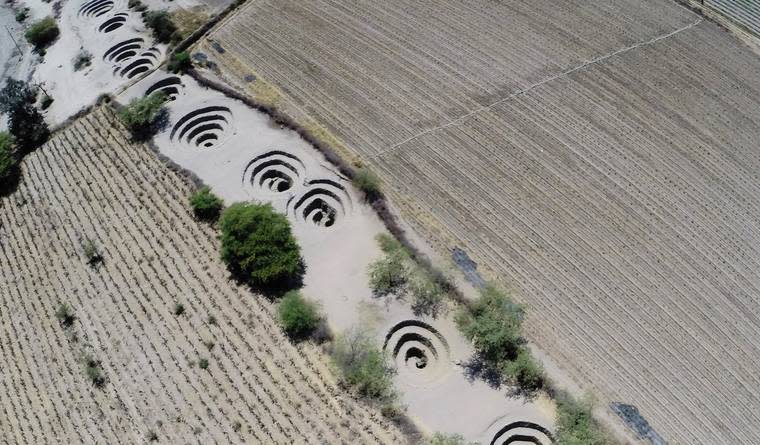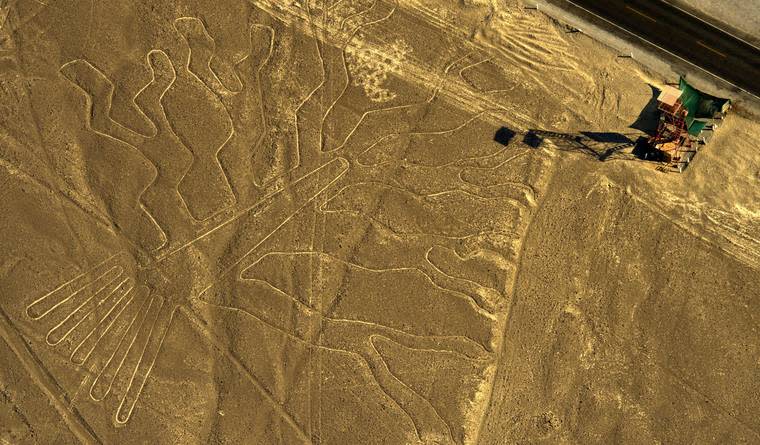Mystery of Nazca, Peru's Puquios: Purpose of Ancient Holes Finally Solved By Satellites
For years, spiral-shaped holes, called puquios, that dot the dry landscape in Nazca, Peru have confused archaeologists. But now, using satellite images, a team of researchers has finally solved the mystery of the holes once and for all, reports the BBC.
The holes are actually part of a "sophisticated hydraulic system constructed to retrieve water from underground aquifers," Rosa Lasaponara of the Institute of Methodologies for Environmental Analysis, in Italy, who conducted the research, told the BBC. "What is clearly evident today is that the puquio system must have been much more developed than it appears today."

Lasaponara and her team used satellite images to analyze the placement of the puquios and realized the extent to which they moved water throughout the region. There is a system of tunnels underground, connecting the puquios. Each spiral hole pulls air down into the canals, moving the water through the network and bringing it to people who would have used it for both agriculture and domestic life, Lasaponara told the BBC.
To design such a system would have meant that the ancient Nazca people who built them had extensive knowledge about the geography of the area, Lasaponara said. The irrigation tunnels may also be connected to the Nazca lines, giant geoglyphs of animals, people and shapes carved into the Nazca desert, Lasaponara told the BBC.

Lasaponara's research will be published in Ancient Nasca World: New Insights from Science and Archaeology this year, reports the BBC.


